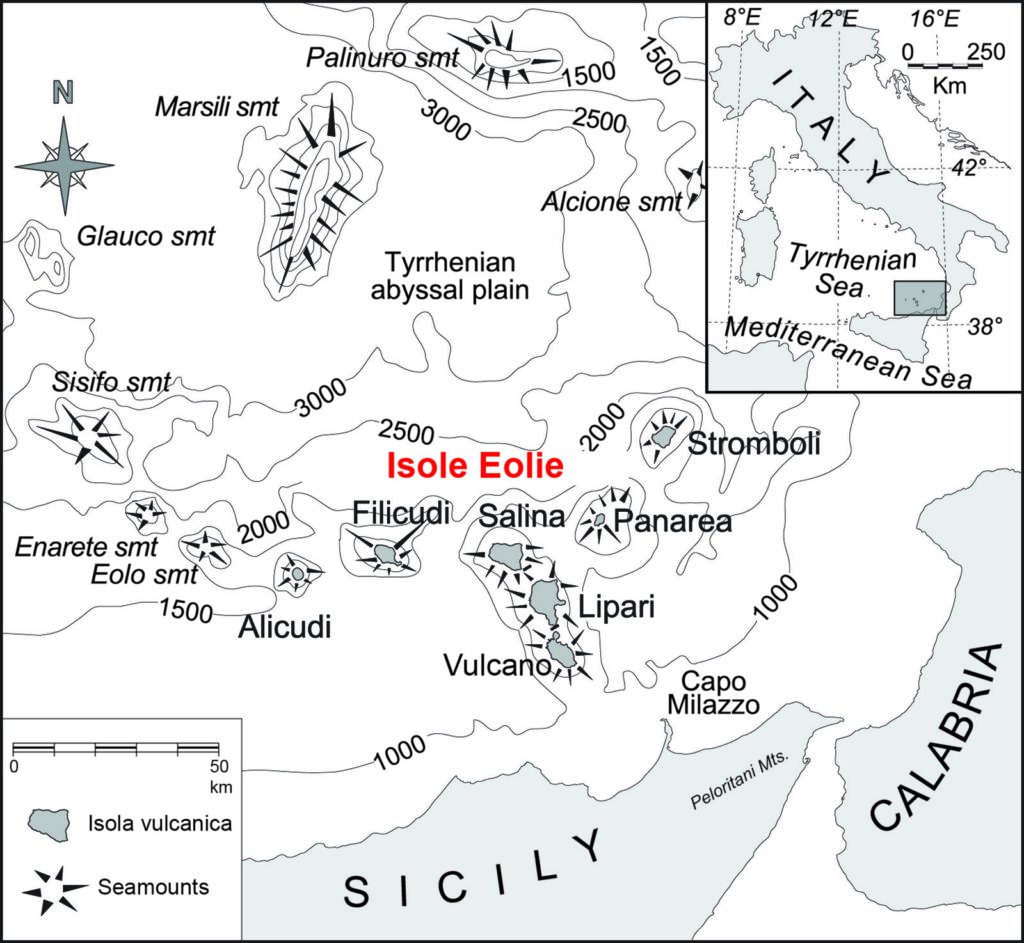One of the main characteristics of the Aeolian archipelago is the enormous difference in colours, morphologies, landscapes and vegetation between one island and another.
The main reason for this is linked to the volcanological history of each island. Only Stromboli, the most recent island to emerge from the sea, has the classic cone shape typical of the collective imagination. The other islands are more irregularly shaped, due to the overlapping of several volcanic centres in time and space. For example, the island of Salina, the second largest in terms of surface area after Lipari, and also known for its twin mountains, was actually formed by the overlapping of at least six main
volcanic structures
. If we were to count all the volcanic structures above sea level in the Aeolian Islands, we would reach more than 50.
 This means that the heights reached by each island are also very different. The Fossa delle Felci Mountain on Salina, for example, towers above regular hills to 964 metres, followed by Stromboli with 924 metres, which is continuously increasing thanks to continuous explosions from its crater. The Gran Cratere of La Fossa on Vulcano, with 386 metres of altitude, is the lowest of the Aeolian Islands
This means that the heights reached by each island are also very different. The Fossa delle Felci Mountain on Salina, for example, towers above regular hills to 964 metres, followed by Stromboli with 924 metres, which is continuously increasing thanks to continuous explosions from its crater. The Gran Cratere of La Fossa on Vulcano, with 386 metres of altitude, is the lowest of the Aeolian Islands